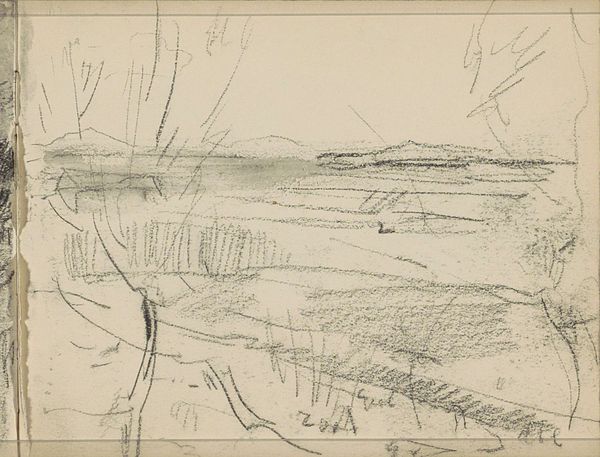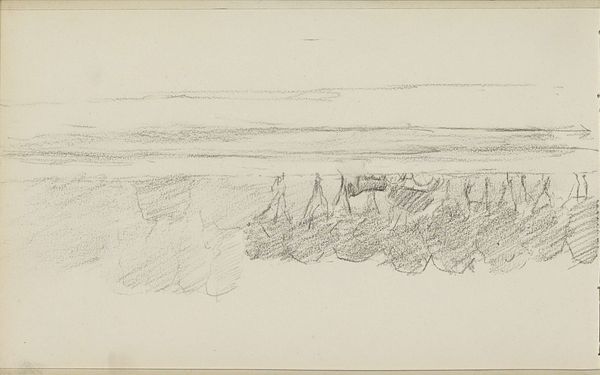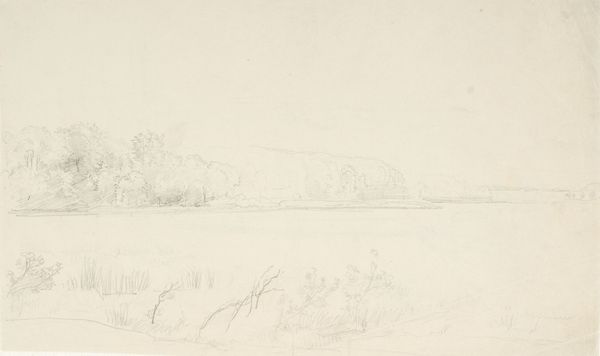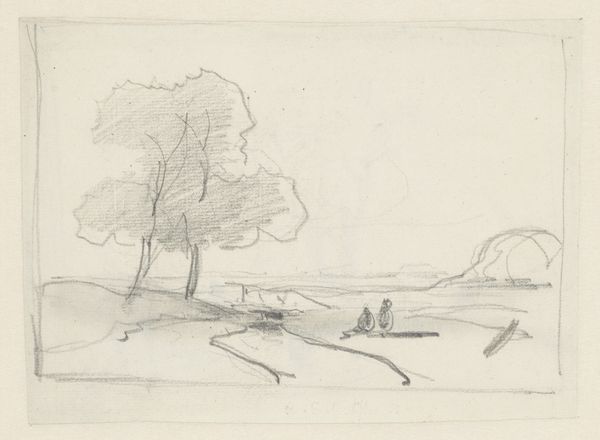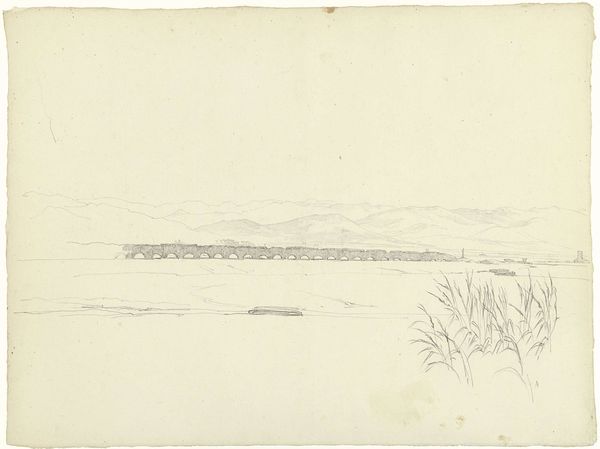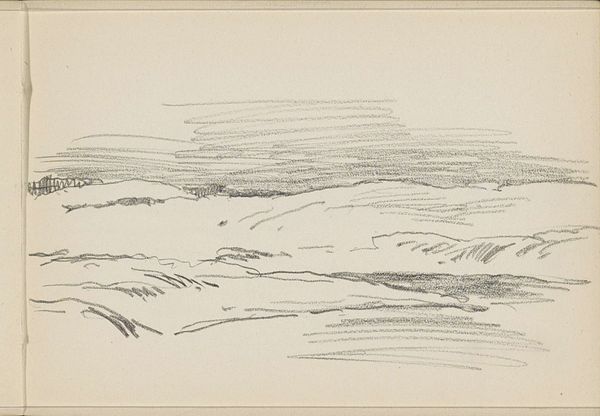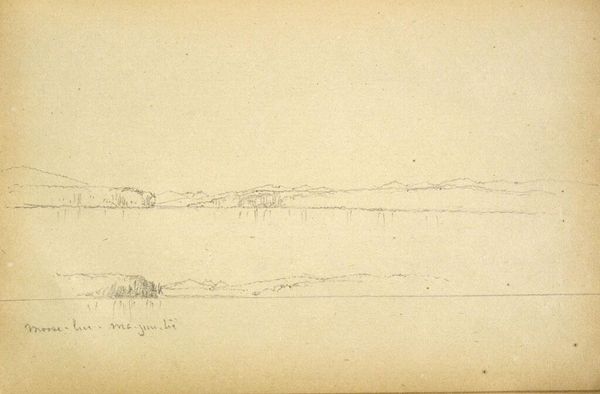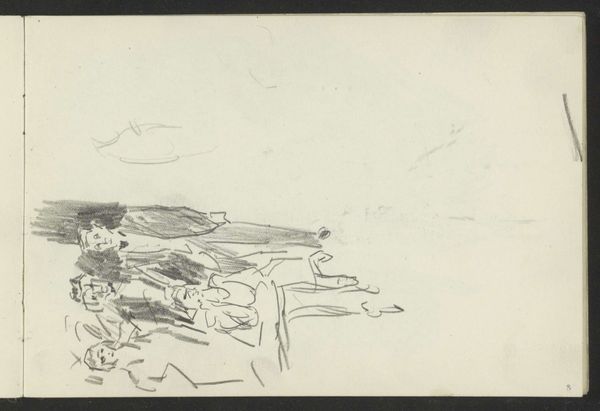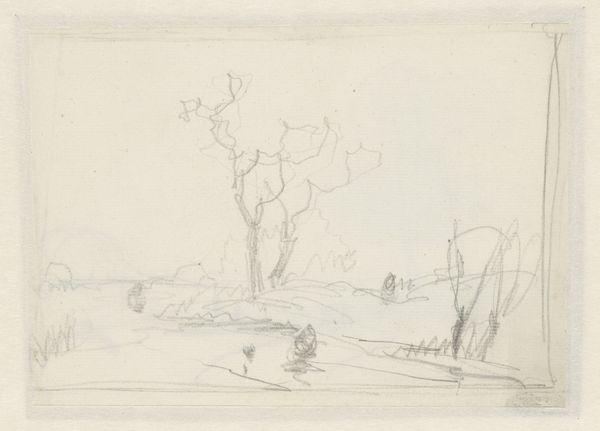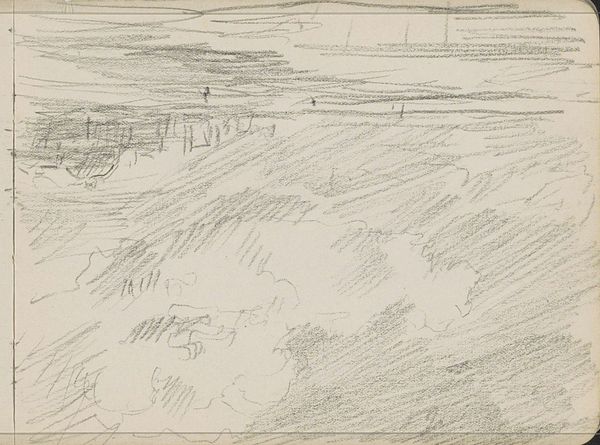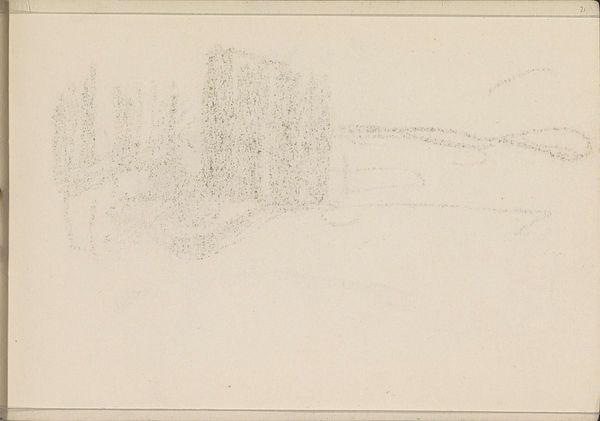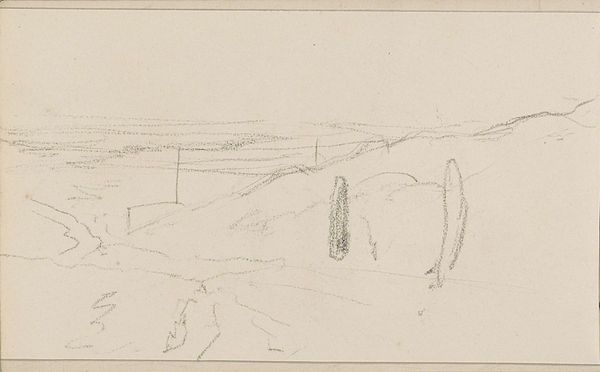
drawing, paper, pencil
#
drawing
#
amateur sketch
#
light pencil work
#
thin stroke sketch
#
pencil sketch
#
incomplete sketchy
#
landscape
#
paper
#
personal sketchbook
#
idea generation sketch
#
detailed observational sketch
#
pencil
#
sketchbook drawing
#
realism
#
initial sketch
Copyright: Rijks Museum: Open Domain
Editor: This is "Waterplanten" by Bramine Hubrecht, likely created between 1865 and 1913. It's a pencil drawing on paper. I’m struck by its simplicity. The almost bareness of the sketch makes it feel very intimate, like a page from the artist's personal sketchbook. What do you see in this piece? Curator: The pencil strokes, thin and deliberate, articulate a fascinating dialogue between form and void. Notice how the composition is structured, a tripartite division of space. The blankness occupies the upper section; then there's the horizontal texture of the water which transitions to a focused foreground. What do you make of Hubrecht’s use of line? Editor: Well, the lines are very economical. They capture the essence of the plants without being overly descriptive. It almost feels like a memory of water plants rather than a precise depiction. It does not follow conventions. Curator: Precisely! We might say the structural tension in "Waterplanten" is resolved not through conventional perspective, but through the considered application of line. What do you suppose the formal effect of this approach might be? Editor: I think it creates a sense of openness. The lack of detail encourages you to project your own imagination onto the scene. It feels very modern, in a way. Curator: Indeed. Hubrecht masterfully uses a simple structural layout, challenging representational conventions of that time. These formal elements become quite expressive. I find this rather illuminating. Editor: I see what you mean. Focusing on the composition and the lines, instead of trying to analyze the image, really changes how I understand the sketch. Thanks!
Comments
No comments
Be the first to comment and join the conversation on the ultimate creative platform.
